
Tuesday, July 23, 2024 (Washington, DC) – The National 4-H Council Board of Trustees voted to add two new members who will help strengthen the organization’s commitment to preparing a new generation of young leaders for work and life. Janice Abraham, retired President & CEO of United Educators, and Darci Vetter, Head of Global Public Policy at PepsiCo bring extensive experience and expertise to support Council’s mission to increase investment and participation in Cooperative Extension’s 4-H program.
“We are thrilled to welcome Janice and Darci to our Board of Trustees,” said Krysta Harden, National 4-H Council Board Chair and President & CEO of U.S. Dairy Export Council. “Their expertise enhances our ability to serve Extension and ensure responsible stewardship of our resources. In addition, the Investment Subcommittee will play a crucial role in guiding, maintaining and growing our financial resources.”
Janice Abraham, Trustee
“The work of 4-H is critically important as it supports the positive development of the youth of this country,” said Abraham. “I am honored to serve on the Board of Trustees as we work with the states, counties, federal government and countless volunteers to prepare our youth to be engaged, healthy and productive citizens.”
As a seasoned risk management professional, Abraham led United Educators’ expansion as CEO for over 25 years, to serve over 1,600 schools, colleges and universities. The author of “Risk Management: An Accountability Guide for University and College Trustees,” prior to joining UE, Abraham served at Whitman College, Cornell University and the National Association of College and University Business Officers. As a former international banker for J.P. Morgan and with her current service on higher education and association boards, Abraham brings expertise from the insurance, finance, investment, risk management and higher education sectors.
Darci Vetter, PepsiCo’s Head of Global Public Policy
“I look forward to supporting Council’s initiatives that empower young people and strengthen communities,” Vetter said. “It is a privilege to support educators and youth within 4-H, contributing to the development of tomorrow's leaders.”
Vetter brings deep expertise in international trade and agricultural policy, including helping companies navigate complex supply chains and implement and report sustainability commitments. Before joining PepsiCo, she served as Chief Agricultural Negotiator at the Office of the U.S. Trade Representative and Deputy Under Secretary of Farm and Foreign Agricultural Services at USDA. Earlier in her career, she served on the Senate Finance Committee staff, and in the agriculture and environmental affairs offices at the Office of the United States Trade Representative.
In addition to welcoming new trustees, Council announced the establishment of an Investment Subcommittee that will oversee the management of short and long-term investments that help sustain and support Cooperative Extension programs across the country.
Investment Subcommittee Members:
About National 4-H Council:
4-H, the nation’s largest youth development organization, grows confident young people who are empowered for life today and prepared for career tomorrow. 4-H programs empower nearly six million young people across the U.S. through experiences that develop critical life skills. 4-H is the youth development program of our nation’s Cooperative Extension System and USDA and serves every county and parish in the U.S. through a network of 110 public universities and more than 3000 local Extension offices. Globally, 4-H collaborates with independent programs to empower one million youth in 50 countries. The research-backed 4-H experience grows young people who are four times more likely to contribute to their communities; two times more likely to make healthier choices; two times more likely to be civically active; and two times more likely to participate in STEM programs.
Learn more about 4H at 4-H.org and follow us on Facebook, Instagram, and Twitter
Artificial intelligence technologies – specifically generative AI tools – are influencing our lives and our world in profound ways. From enabling new scientific discoveries in fields like genetics and chemistry, to making basic research easier, to helping people in a growing range of jobs work more efficiently, AI is changing how we create, collaborate and communicate with one another. And young people will increasingly become those leading the creation and navigating the consequences of these powerful tools and technologies.
The advent of generative AI also has major implications for the economy and workforce of the future. According to the World Economic Forum, familiarity with AI and big data is already one of the skill sets most sought after by employers. Demand for AI-savvy workers will only increase as these technologies become more advanced and play a bigger role in our daily lives.
Today’s young people are already powerful digital natives who have been introduced to AI and hold some knowledge about its possibilities, according to our new survey. The next generation of leaders adapt to new technological advances with incredible tenacity, and now it is our responsibility as adults to support this fervor. We have six million innovators with the promise and potential to create a future that harnesses powers from AI that we don’t yet grasp.
It is time we supplement this foundational knowledge of AI and expand on how to use it effectively, safely, and responsibly – in the classroom, at home and beyond.
Our survey is the first to examine AI use and understanding among young people (ages 9-17) and shows that young people are optimistic about generative AI’s potential. To help realize this optimism, young people would like adults to help them engage with these tools correctly and confidently.
Here are some key takeaways from the survey:
There are several steps we can take to tap into the inherent power of these digital natives and support their understanding of an AI-driven future and economy, even while understanding that the field is evolving and there is so much more we can all learn. Here are a few places to start:
Both of our organizations are taking steps to provide support on AI for adults and young people. National 4-H Council is looking to develop educational content about AI through the new CLOVER digital learning platform, local Cooperative Extension 4-H programs, and our connection to 110 universities nationwide. Microsoft recently released a Family Safety Toolkit to support caregivers’ conversations with their children about generative AI, as well as a Classroom Toolkit, providing guidance to educators on creating an immersive and effective learning experience with generative AI for students aged 13-15 years.
As a next phase of our partnership, 4-H will be conducting a series of focus groups with members to dive deeper into the survey results. Our goal with these sessions is to gain a greater understanding of how different communities and ages are using these tools and how we can help them succeed. We will share our findings publicly so that everyone can benefit from the insights.
Preparing young people for the workforce of the future means doing our due diligence as adults to build upon their natural fluency for technology and provide the resources they need to understand generative AI. It’s on all of us to ensure that the youth in our lives are set up to thrive and understand how to leverage these new technologies that are reshaping our world.
During my first year of high school, I represented 4-H at a local elementary school for Ag Literacy Week. While reading the book "How Did That Get in My Lunchbox?", I shared my childhood experience of growing up on a dairy farm. The students expressed their need for more understanding of agriculture. As I shared stories of living on a farm and my future goal of attending a four-year University to study animal genetics with the ultimate plan of becoming a lawyer, students became enthusiastic and excited to learn more about agriculture, farming, and the environment around them. I vividly remember Camille, a girl who looked like me, raising her hand and saying, "I love science and animals too, but I can't be a farmer or do what you want to do because I live in an apartment."

This conversation motivated me to create a solution for diverse and rural youth in my community to have access to agriculture and agriculture-related careers. As 4-H Honor President and a student member of the county's school board, I developed and honed communication and relationship-building skills to make my dream a reality. With the help of my 4-H agent, we assembled a Youth in Ag team that included our county mayor, ag committee members, county commissioners, and school board members.
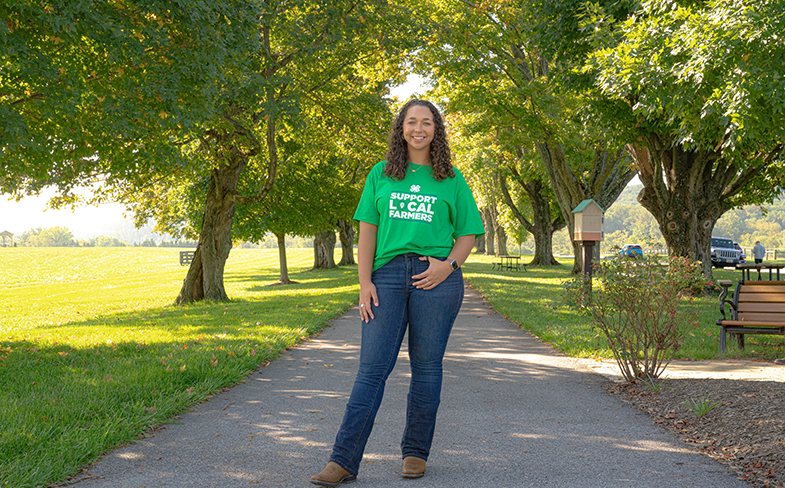
During our first meeting, I shared my experience reading to students and emphasized the need to create opportunities for youth in our community. We discussed the project's goals, which included helping participants develop a solid understanding and framework of what agriculture is, exposing them to careers in agriculture, and developing relationships with key industries and individuals to increase awareness of the project. We also arranged a schedule of events, school bus transportation, and potential costs. The project we developed was called "See Yourself in Ag," which aimed to connect diverse youth to successful individuals in our community to highlight the importance of persistence, resilience, and individuality, specifically in the workplace.
"We've been able to reach and empower more youth through the See Yourself in Ag project, which encourages youth to see their place in agriculture and understand their tangible value."
With the help of critical individuals, I secured donor and volunteer investments through relationship-building. When scheduling event dates, I engaged a wide range of various individuals and businesses instead of solely on farmers. I also utilized local agricultural industries to showcase all sides of agriculture, including science, profit, animals, crops, etc. The goal was to understand the many diverse aspects and roles within agriculture, not just farming.
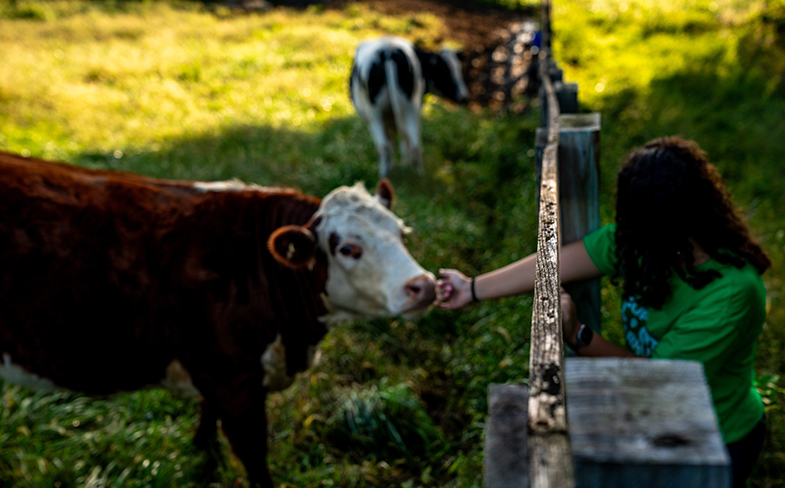
We've been able to reach and empower more youth through the See Yourself in Ag project, which encourages youth to see their place in agriculture and understand their tangible value. My biggest goal is to inspire youth like Camille to realize they belong and to create equitable opportunities for youth to be exposed to agriculture. I believe that creating a space for others to belong doesn't require anything special other than knowing your strengths and having a passion for it. I know that See Yourself in Ag is only possible due to the voice, belonging, and knowledge that 4-H has given me.
Join me in celebrating Ag Week! Are you interested in learning more about ag? Explore some of these awesome CLOVER activities or discover my favorite items on Shop 4-H.
It was an action-packed 2023, with the 4-H team and our incredible partners again showing what's possible when we work together to prepare our youth for their future! Our shared commitment to fostering success, empowerment, and community engagement will continue inspiring millions of kids to find their spark and explore their passion in 2024, creating impact in every corner of the country.
4-H launched the year with our inaugural event, Ignite by 4-H. This four-day teen event saw over 700 youth from around the country visit Washington, D.C., for inspiring panels, speakers, workshops, and entertainment, all while creating important connections with peers, educators, and industry leaders. The event was so successful that 2024 Ignite is already sold out – with a 30% increase in capacity!

Our PYD Academies, which equip 4-H educators with the essential knowledge and skills to plan, implement, and evaluate high-quality 4-H programs that help youth thrive, also grew out of their pilot stage. This year, the Academies will feature new multi-day, multi-session Academies and half-day Immersions. Given the excellent evaluations, attendance is projected to grow 15-20% for the next three years.
The eLearning team was busy with the successful launch of CLOVER by 4-H, bringing hybrid PYD to thousands of kids nationwide. We're aiming for 35% year-on-year growth in platform users and an increase in activities from 187 to over 300 over the next three years.

And what would summer be without camp? When it comes to providing a child with a life-changing experience, there's nothing quite like 4-H camp, which provides the full benefits of a 4-H experience coupled with the fun and wonder of camping in the great outdoors. By giving kids the gift of a 4-H camp experience, our partners enable them to experience activities outside their comfort zones, helping them become more resilient, independent, and better able to plan and reach their long-term goals.
The Cause Marketing team was hard at work in 2023, bringing two new partners on board, Crayola Flowers and Solvet; having a record-breaking year with JOANN, which raised $1.2M for 4-H; and reaching a massive milestone with Tractor Supply, which has raised $20M over the 13-year partnership! The funds generated from these campaigns ensure that young people nationwide can access our transformative programming. In the coming months, we are looking forward to a new 4-H offering from our friends at BOGS Boots and continuing to celebrate incredible 4-H'ers through the Georgia Boot Trailblazer program.
We look forward to working with new partners this year to continue to bring opportunity to all kids.
On the STEM side, one of the standout successes of 2023 was the Google Coding Camps, which were held in rural and underserved communities to link young people to technology, resources, and training. The participants expressed newfound enthusiasm for technology and a heightened interest in pursuing STEM-related fields, which is critical given that jobs in STEM fields are expected to grow twice as fast as non-STEM occupations in the coming years.
4-H is Looking Forward
Our research has shown that kids lack the essential skills they will need to thrive, like analytical thinking, resilience, and adaptability, which is why our 2024-2027 strategic plan will focus on nurturing the emotional well-being of youth while building a talent pipeline of young people who are ready to solve society's most significant challenges.
Thanks to the support of our partners, 2024 promises to be another successful year for our six million 4-H'ers, 3,500 educators, 500,000 volunteers, and 35 million alums! Like 2023, this year will be marked by innovative programs, impactful partnerships, and record-breaking achievements. From empowering youth with coding skills to spreading joy through artistic expression, from record-breaking fundraisers to monumental milestones in collaboration with our corporate partners, we can't wait to empower millions more leaders of tomorrow.
*No endorsement by 4-H is implied or intended.
WASHINGTON, DC (October 2, 2023) – National 4-H Council today announced the winners of the 2024 Youth In Action Awards, a national program sponsored by Bayer that recognizes four diverse young leaders who have made a positive impact in their communities.
The winners will each receive a $5,000 higher education scholarship and spend 2024 inspiring other youth by telling their 4-H story. In addition, they will have opportunities to showcase their work nationally, network with prominent 4‑H alumni, and serve as official 4-H spokespeople for Youth in Action.
The announcement was made during National 4-H Week, held October 1-7, 2023 to celebrate and showcase the opportunities and impact that 4‑H offers young people across the country.
The winners of the 2024 4-H Youth in Action Awards are:
“The 2024 Youth in Action Awards honor four incredible young people, each of whom are model examples of their generation – embodying a commitment to service, a love of their communities and a passion for leadership that represent the best of 4-H,” said Jill Bramble, President & CEO, National 4-H Council. “We are proud that Cooperative Extension’s 4-H programs have offered Katie, Amiyah, Reed, and Avani these opportunities to lead and tools to succeed, which they have used to make a positive impact on their communities and inspire other 4-H’ers to do the same.”
The 4-H Youth in Action Awards, sponsored in part by Bayer, began in 2010 to recognize young people who overcome challenges and use the knowledge they gain through participation in 4-H to create a lasting impact in their community.
To learn more about Youth in Action, please visit http://4-h.org/parents/4-h-youth-in-action/.
ABOUT 4-H
4-H, the nation’s largest youth development organization, grows confident young people who are empowered for life today and prepared for careers tomorrow. 4-H programs empower nearly six million young people across the U.S. through experiences that develop critical life skills. 4-H is the youth development program of our nation’s Cooperative Extension System and USDA and serves every county and parish in the U.S. through a network of 110 public universities and more than 3000 local Extension offices. Globally, 4-H collaborates with independent programs to empower one million youth in 50 countries. The research-backed 4-H experience grows young people who are four times more likely to contribute to their communities; two times more likely to make healthier choices; two times more likely to be civically active; and two times more likely to participate in STEM programs. Learn more about 4‑H at 4-H.org and follow us on Facebook, Instagram, and Twitter.
ABOUT BAYER
Bayer is a global enterprise with core competencies in the Life Science fields of healthcare and agriculture. Its products and services are designed to benefit people and improve their quality of life. At the same time, the Group aims to create value through innovation, growth, and high earning power. Bayer is committed to the principles of sustainable development and to its social and ethical responsibilities as a corporate citizen. In fiscal 2015, the Group employed around 117,000 people and had sales of EUR 46.3 billion. Capital expenditures amounted to EUR 2.6 billion, R&D expenses to EUR 4.3 billion. These figures include those for the high-tech polymers business, which was floated on the stock market as an independent company named Covestro on October 6, 2015. For more information, go to www.bayer.com/.
Today’s youth are digital natives who strive to make their mark. In 4-H we’re deeply committed to providing them with the tools to thrive, regardless of their circumstances. It’s why we built CLOVER by 4-H, our new e-learning platform, which features content from more than 100 land-grant universities across Cooperative Extension to encourage hands-on learning for young people.

This month, we’re joining forces with Netflix on a CLOVER by 4-H x Spy Kids: Armageddon collaboration that leverages the power of technology and entertainment to spark curiosity, creativity, and learning – anytime, anywhere.
Premiering on Netflix today, Spy Kids: Armageddon was written, produced, and directed by Robert Rodriguez and stars Gina Rodriguez, Zachary Levi, Everly Carganilla, and Connor Esterson. As a proud Latino, on this Hispanic Heritage Month, I’m incredibly honored to be associated with this partnership. The guiding principle behind this partnership is simple: harness the power of entertainment and education to instill a passion for STEM in young minds.
Drawing inspiration from the thrilling adventures of the film, 4-H has crafted a compelling virtual escape room debuting on CLOVER today. #GAMECLOVER is a bespoke activity developed by Utah State University Extension that exposes kids to the magic of game design and programming. By engaging with this activity, learners will discover how the fascinating world of gaming seamlessly intertwines with the realms of mathematics, coding, and physics.
To help get into ‘spy mode’, Robert Rodriguez lent his voice and talents to CLOVER promotional content encouraging all kids and their parents to ‘level up’ with #GAMECLOVER. Netflix also extended exclusive invites to select screenings of the film before its release on the streaming platform. 4-H kids and families in Atlanta, Dallas, Houston, Phoenix, and Pittsburgh were treated to a unique experience that was more than just entertainment. By providing an early glimpse, Netflix helped us leave a profound impression on young, STEM-curious hearts and minds.

The collaboration between 4-H and Netflix through Spy Kids: Armageddon and CLOVER by 4-H is a testament to the boundless possibilities that emerge when purpose-driven organizations and influential brands unite their resources.
#GAMECLOVER is just one example of the content on CLOVER that highlights the excitement and innovation that accompany fields such as engineering, technology, and space exploration. Our hope is that CLOVER inspires a generation of future scientists, engineers, and inventors.
Here’s a snapshot of what families can expect from the platform:
CLOVER gives us an exciting new tool to help shape a world where curiosity thrives, innovation reigns, and young minds emerge as the torchbearers of progress. Together, we can inspire, educate, and empower the next generation of trailblazers, problem solvers, and changemakers.
Join us in shaping a future where innovation knows no bounds!
#Opportunity4All
As the mom of two Gen Z children, I know firsthand the challenges that our young people are facing, from the lingering impacts of the global pandemic and an ongoing mental health crisis, to the ever-evolving technological landscape. But, even in the face of tremendous change and uncertainty, this young generation has incredible promise: they are filled with purpose, they embrace diversity, they care about their communities, and they drive innovation.
In 4-H, we believe opportunity should not be pre-determined by any person’s circumstance. Our mission is to inspire all young people to thrive and achieve. Too many of America’s youth are lacking the opportunities that prepare them to lead in life and career. That’s why we are thrilled to bring Cooperative Extension’s 4-H program to even more young people with CLOVER by 4-H.
CLOVER is a digital learning platform that encourages hands-on learning in a fun and accessible way. Developed by Cooperative Extension and our network of land-grant universities, CLOVER’s content spans more than 20 subject areas, including STEM, emotional wellbeing, financial literacy, and career readiness. With both free and paid subscriptions, CLOVER is another way to ensure that young people everywhere have access to high-quality 4-H programming.
Key Things to Know About CLOVER
To kick off the launch of CLOVER, we have partnered with Netflix on an activity tied to the new movie Spy Kids: Armageddon. #GAMECLOVER builds on key themes of the movie by teaching young people the basics of coding and game design using an ‘escape room’ format. By expanding upon the popular Spy Kids experience, the #GAMECLOVER activity is an approachable way for kids to take an interest in STEM.
In the coming months, CLOVER users can continue their online STEM education with a collection of computer science activities ranging from computer basics to augmented reality, supported by Google.
CLOVER furthers our mission of equipping millions of 4-H’ers with the skills and confidence they need to excel in future careers and help solve the world’s biggest challenges. We look forward to seeing young people use CLOVER to spark creativity, explore future career paths, and grow their passion for learning.
To discover more and sign up for CLOVER, visit 4-h.org/clover.
Conversations with more than 80 funders, nonprofit leaders, and other experts highlight the urgency and mindset shifts needed to unlock capital and invest in the region.
BOSTON—August 24, 2023—Funders with fresh mindsets have a timely opportunity to invest in the Black rural South and help the region access large-scale funding that has the potential to fuel economic mobility, according to a new research study published today by The Bridgespan Group and National 4-H Council.
Of the approximately 200 rural counties in the South with Black populations of 25 percent or more (“the Black rural South”), all but two land in the bottom half for upward mobility for young people, previous Bridgespan and National 4-H Council research found. Yet these communities, with rich social and cultural capital, have contributed disproportionately to building the nation’s wealth and have tremendous ability to continue contributing to opportunity in our country with investment, particularly in our youth.
Mike Soskis, Bridgespan principal and co-author of the report, says, “The opportunities for impact are there: We’re seeing some funders moving from framings or misconceptions that deter investment to mindsets that can help fuel economic mobility for young people. And they’re noticing the tremendous opportunities and leaders in the region.”
According to a U.S. Department of Agriculture report, approximately 30 percent of Black residents in non-metro areas live in poverty—a higher rate than any other race or ethnic group, urban or non-urban.
The Black rural South also sits at the intersection of three philanthropic funding challenges, according to the new study: Rural communities see less funding than their metro counterparts; the South has historically been substantially underfunded; and leaders of color systemically receive less funding than white leaders.
“Still, in our conversations with more than 80 funders, nonprofit leaders, 4-H staff at historically black colleges and universities (HBCUs), researchers, and field experts, we found much to be excited about: Caring communities and innovative organizations are employing a number of promising approaches to support economic mobility for young people in the Black rural South,” says Angie Estevez Prada, Bridgespan consultant and report co-author.
The report highlights examples from leading funders in the region and articulates four mindset shifts more philanthropists must make to take advantage of the numerous opportunities that exist:
“Creating pathways to opportunity for young people in the Black rural South is difficult. But for funders willing to adopt these mindsets, this is an area where even one funder, especially one funder, can help enact positive change,” says Tay Moore, former member of National 4-H Council’s Youth Alumni Advisory Committee and Board of Trustees. “The Black rural South is ready. The region is hungry for change and deserving of investment.”
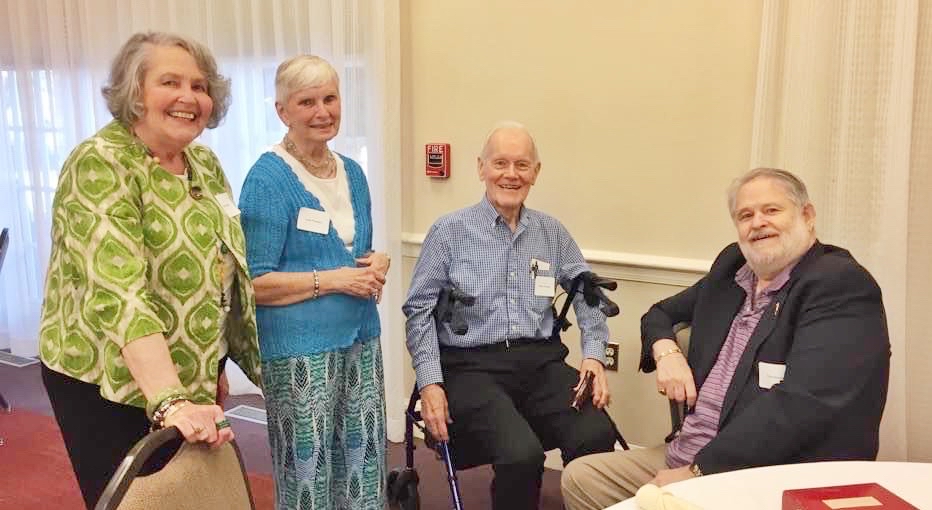
Melvin John Thompson was a genuine, 4-H-grown leader. He taught teens how to pursue peace through understanding and to strengthen ties through civic engagement. He turned the power of positive youth development – which was central to his life – into a catalyst for change in the international community. While I didn’t have the pleasure of working with Mel, I’ve seen the beautiful fruits of his labor.
During my career at National 4-H Council, I’ve met countless prominent alumni who were inspired by his passion, influenced by his leadership, and impacted by his mentorship. From government officials to corporate leaders in agriculture, he instilled in others the importance of service and connection while sharing from his abundance of knowledge.
Mel’s leadership of the International 4-H Youth Exchange (IFYE) Association is legendary. The program attracted high levels of talent and gained prominence in Washington under his management; but even so, Mel was humble about his role in its success – always pointing to the incredible accomplishments of our 4-H youth. Over the course of 20 years, Mel empowered thousands of young people to have an integral role in international relations.
Mel passed away last month leaving behind his beloved family and a powerful legacy. I asked Don Floyd – Former President and CEO of National 4-H Council and a personal friend and mentor – to share his memories of Mel. Here are his reflections:
By the time I joined National 4-H Council in 1991, Mel was already retired from his work with IFYE. Everyone knew Mel as the thoughtful mentor, the guru, the father figure. He meant so much to these young 4-H’ers who were part of the international program.
When I started exploring the potential of a Global 4-H Network with 4-H programs around the world in the mid-2000s , Mel was the wise counselor who helped me navigate international waters. He had a particularly warm spot for Council from his time as an associate and had a deep understanding of 4-H, so he wanted to do what he could to help our programs succeed. One of the ways he did this was by introducing us to the right people. For example, he connected me with Ambassador Dan Mozena at the State Department. Dan would open doors for me and for Council like you wouldn’t believe – and that’s all through the connection with Mel.
Mel would do anything for “the Clover” and always had his heart in the right place. It was a pleasure to know him and an honor to partner with him in creating a better world for young people through 4-H.
4-H was a family tradition for Mel. His great grandmother started the Ravenna 4-H Club in 1925 and his mother was heavily involved in 4-H. He joined as a young boy in 1943, won the State 4-H Achievement Award in 1951, worked for Michigan State University Extension for many years, and then went on to hold leadership roles within 4-H at both the national and international level. His accomplishments didn’t go unnoticed, as he was inducted into Michigan State University’s Emerald Clover Society and the National 4-H Hall of Fame.
In fact, Mel’s foundational 4-H experience is part of what made him an incredible leader with unparalleled character and integrity. During his Hall of Fame induction in 2012, Mel shared that 4-H “provided the whole focus for [his] life.” I’m so grateful that, for all that he credits to his 4-H experience, he chose to give back to 4-H youth and the global community ten-fold.
Mel will be remembered for many things: for his character, his friendship, his military service, his prominent roles in 4-H and the U.S. Peace Corps, and even for his “Michigan-famous 4-H Pineapple Upside Down Cake Demonstration.” But the most enduring part of this legacy is the profound impact he had on so many lives, young and old alike.
When someone makes a positive difference that has outward influence, it’s often called a “ripple effect.” And for Mel, those ripples have crossed oceans – bringing youth together from across the globe – and will continue to spread as his legacy impacts generations to come.
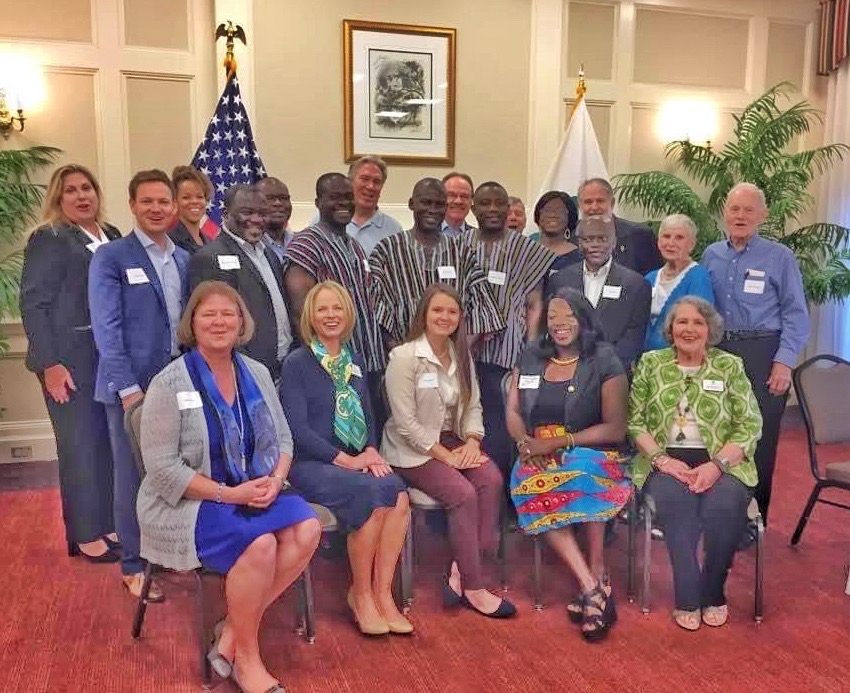
New York Jets linebacker and Tennessee 4‑H Alumnus Avery Williamson is joined by Ohio 4‑H member Joyona for a Day in the Life experience. Avery gives Joyona a tour of his home and farm, while sharing his 4‑H experience and passion for agriculture. The experience is sponsored by Nationwide.

A group of Michigan 4‑H’ers spent a day with IndyCar driver and California 4‑H alum, Charlie Kimball at the Detroit Grand Prix for an exciting Day in the Life experience where they learned about the STEM behind racing.

Illinois 4‑H’er Caleb joins Olympic legend and gold medalist Jackie Joyner-Kersee for an exciting Day in the Life experience where they explore urban agriculture.
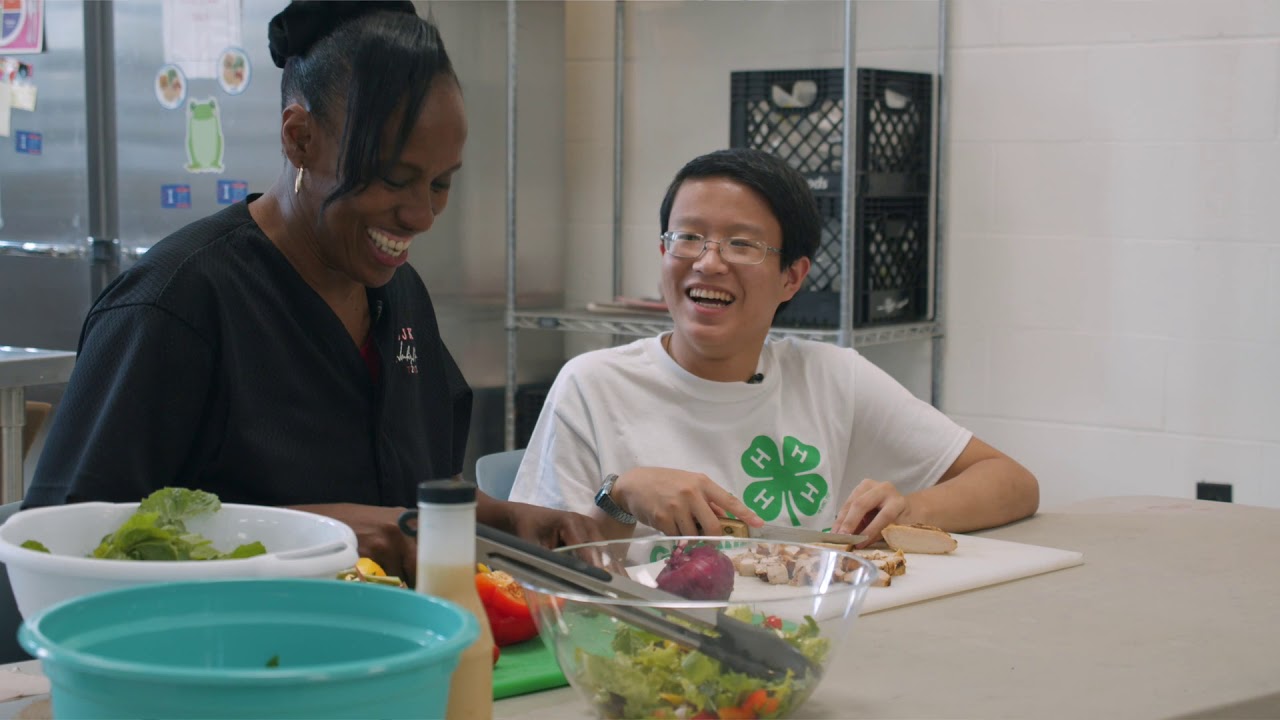
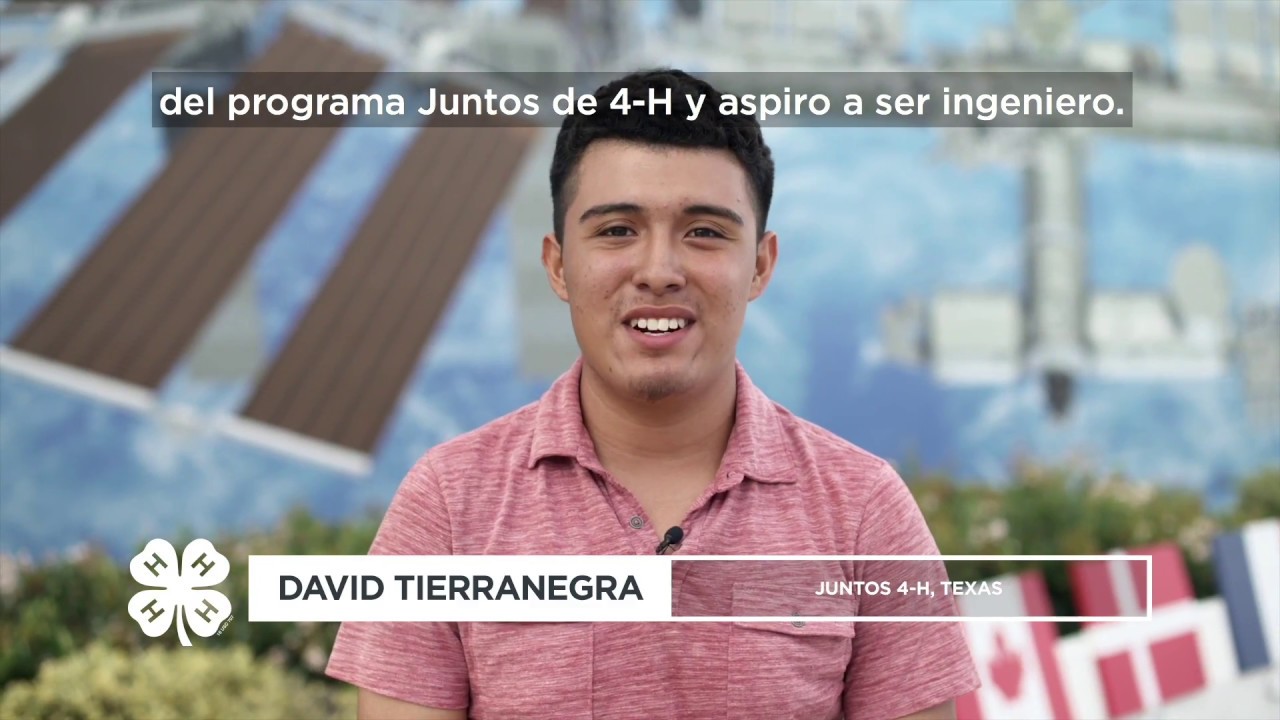
4‑H Grown alumna Aubrey Plaza is promoting her new film, and she brought Delaware 4‑H’er Andrew along for the ride in the newest “Day in the Life” experience.

Georgia 4‑H’er Callista hangs out with 4‑H Grown alumna and National 4‑H Spokesperson Jennifer Nettles in a new “Day in the Life” experience.
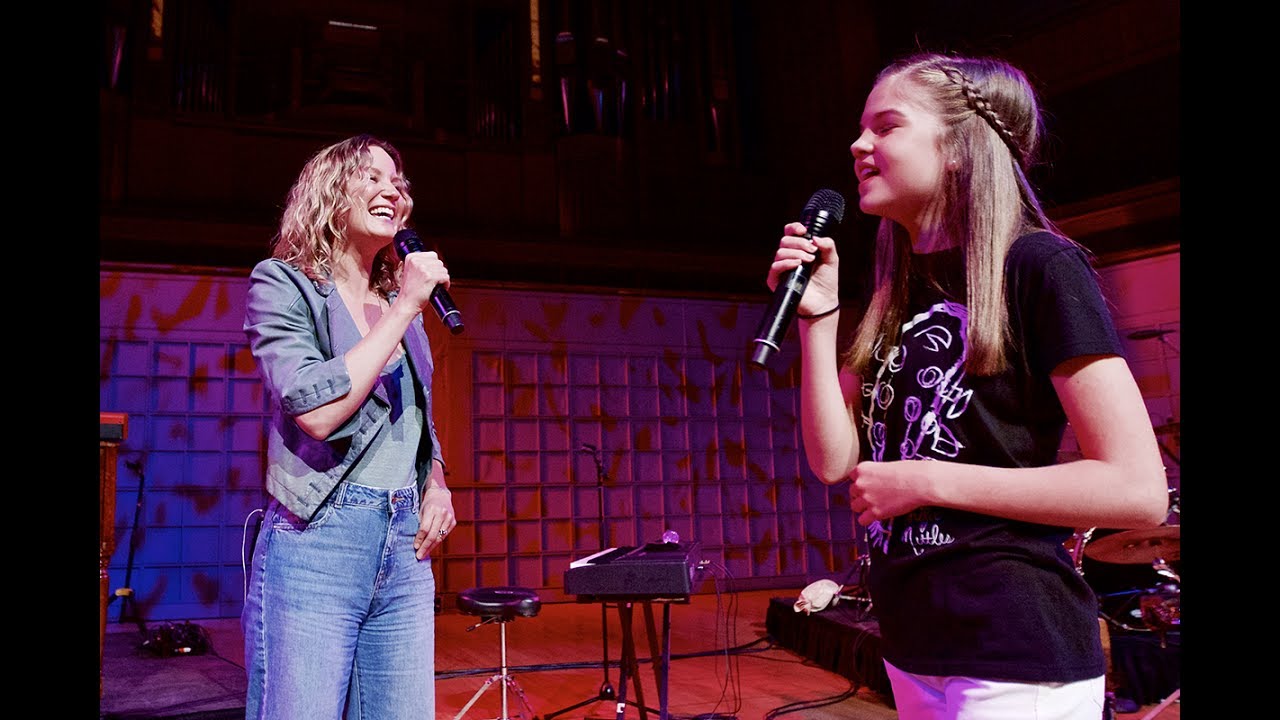
Carla Hall, co-host of ABC’s The Chew and proud 4‑H Grown alumna from Tennessee, pays it forward to collegiate New York 4‑H’er Jasmine.

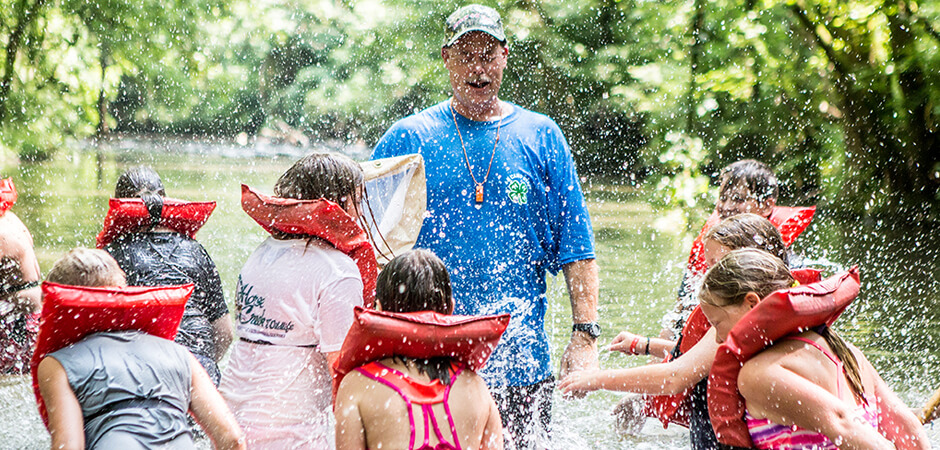
Visit our Alumni Resources page to check out what’s new and connect with the alumni community.